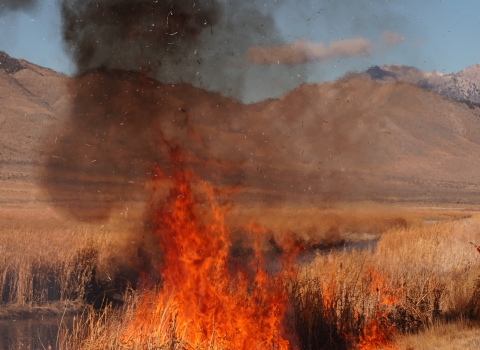On Friday, President Obama signed the Multinational Species Conservation Funds Semipostal Stamp Reauthorization Act into law, meaning once again, Americans will be able to purchase the Save Vanishing Species Stamp at post offices and online, with funds going to help conserve some of the world’s most iconic and threatened species.
The stamp – affectionately known as the Tiger Stamp for the painting of an Amur tiger cub it bears – functions as a regular postal mail stamp that sells at a small premium. The additional money goes to the Fish and Wildlife Service’s Multinational Species Conservation Funds, directly funding conservation of elephants, rhinoceros, tigers, great apes and marine turtles.
“Poaching to feed the growing black markets for wildlife products such as elephant ivory and rhino horn is pushing several species closer to the precipice of extinction,” said Service Director Dan Ashe. “The American public can play a key role in reducing the threat to these global treasures by never buying products made from these animals and educating their friends and family to do the same. I am delighted that now they can once again also directly support on-the-ground conservation efforts in the range countries of these species by purchasing Tiger Stamps.”
The stamp was created in 2011, but sale was only congressionally mandated for two years. At the end of 2013, the Post Office elected to pull the stamp from its shelves. This reauthorization act, passed by the Senate on July 31 and the U.S. House of Representatives on September 8, now guarantees an additional four years of sale.
The Tiger Stamp has already generated more than $2.5 million dollars for international conservation from the sale of 25.5 million stamps, leveraging an additional $3.6 million in matching funds for 47 projects in 31 countries. Examples of projects include:
- In the Meghalaya state of India, a stamp-funded project is securing remnant community forests by making them community conservation reserves to be locally managed for the benefit of elephants.
- In Kambas National Park, Indonesia, a key partnership is decreasing human-elephant conflict at the edge of the park by expanding and securing habitat and vital water needs for elephants within the park.
- A landscape approach to conservation of the Cross River gorilla in Cameroon and Nigeria is ensuring the survival of this critically endangered great ape through support for a network of core protected areas and corridors across the Afi Kagwene landscape, managed in collaboration between local communities and governments.
- Conservation of West African chimpanzees is being achieved by increasing management capacity and local community involvement at the newly established Grebo National Park in Liberia.
- A conservation program for East Pacific green turtles in the Galapagos Archipelago is monitoring population trends at primary nesting beaches, and assessing key threats to determine the appropriate management response from the national park.
- Community-based monitoring, education and awareness programs on Tetepare and Rendova in the Solomon Islands is supporting conservation programs at two beaches, which are vital for nesting endangered West Pacific leatherback turtles.
- In the Bangladesh Sundarbans, teachers, journalists, religious leaders, local politicians and villagers are being engaged to encourage local inhabitants to commit to not killing tigers or their prey by increasing social disapproval of these behaviors and by promoting saving tigers as heroism.
- In the Corbett-Rajaji landscape in India, frontline law enforcement staff and special operation groups are being trained and equipped to prevent wildlife crimes.
- In Matopos National Park, Zimbabwe, rhinos are being marked or tagged so they can be tracked for security purposes. In particularly high risk areas, some individuals are being dehorned to reduce the incentive for poachers.
- In Mkomazi National Park, Tanzania, and North Luangwa National Park, Zambia, local community education programs are helping reduce the poaching pressure on black rhinos.
The Save Vanishing Species Stamp will be available in U.S. post offices and at USPS.com. To learn more about the Multinational Species Conservation Funds and the Save Vanishing Species Stamp, visit: www.tigerstamp.com.



